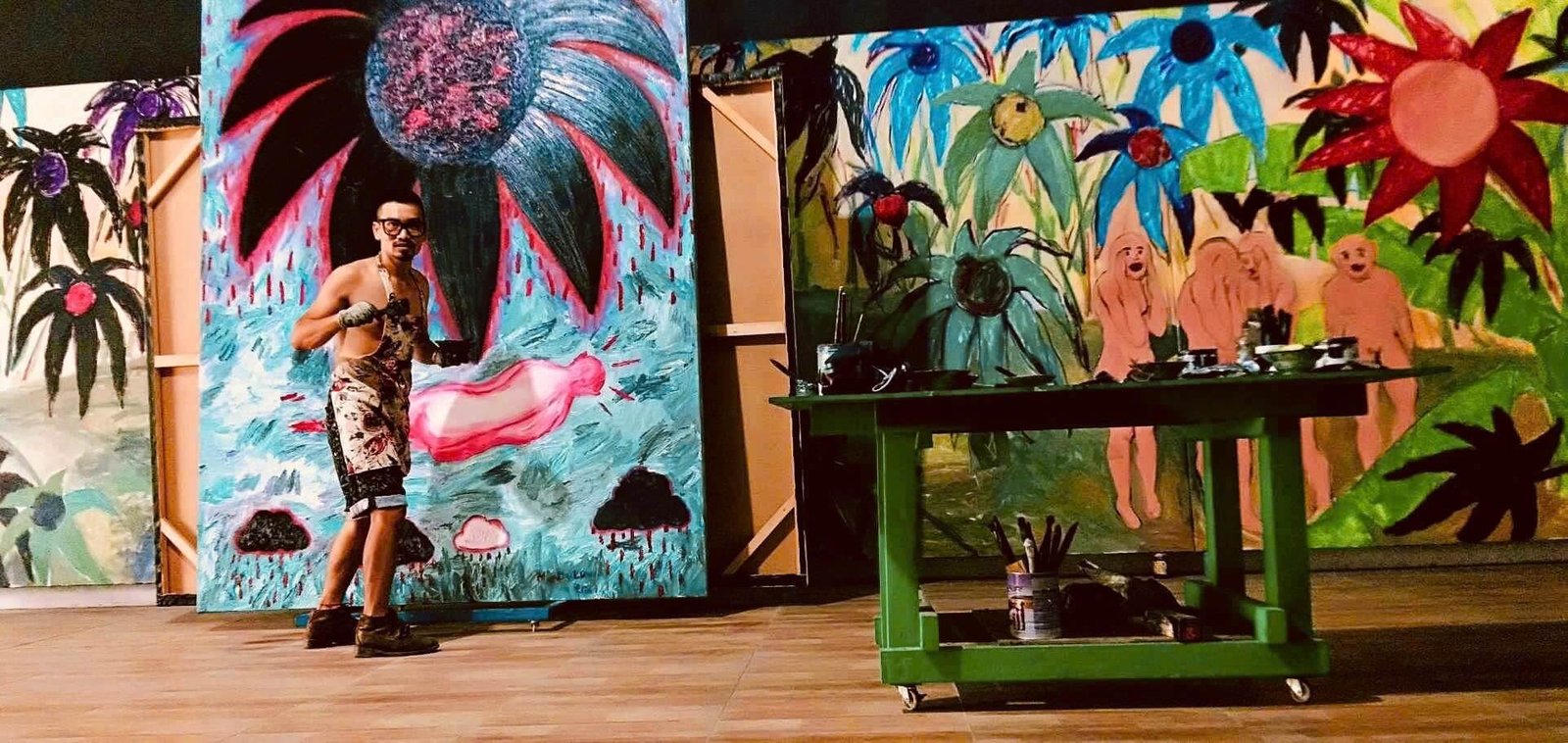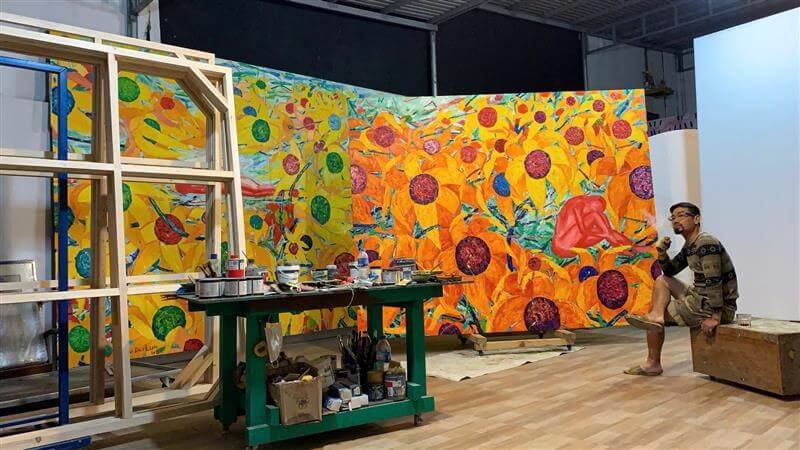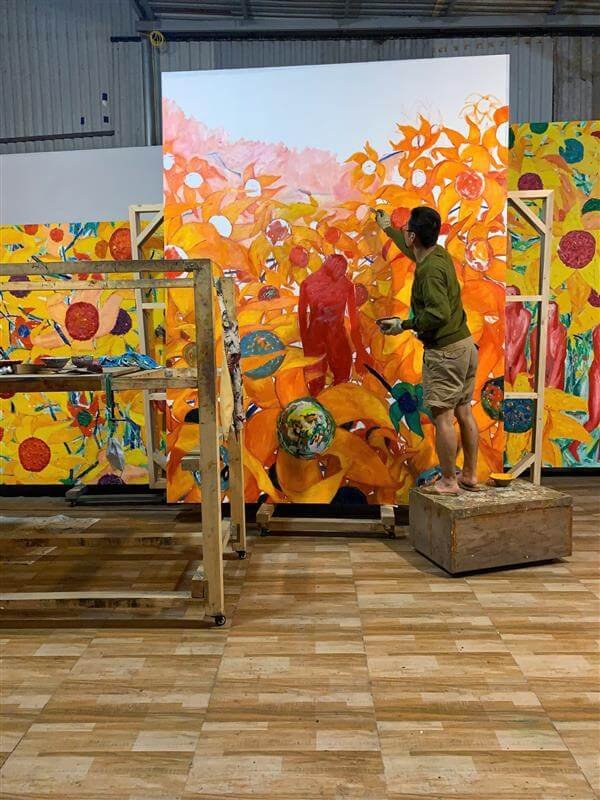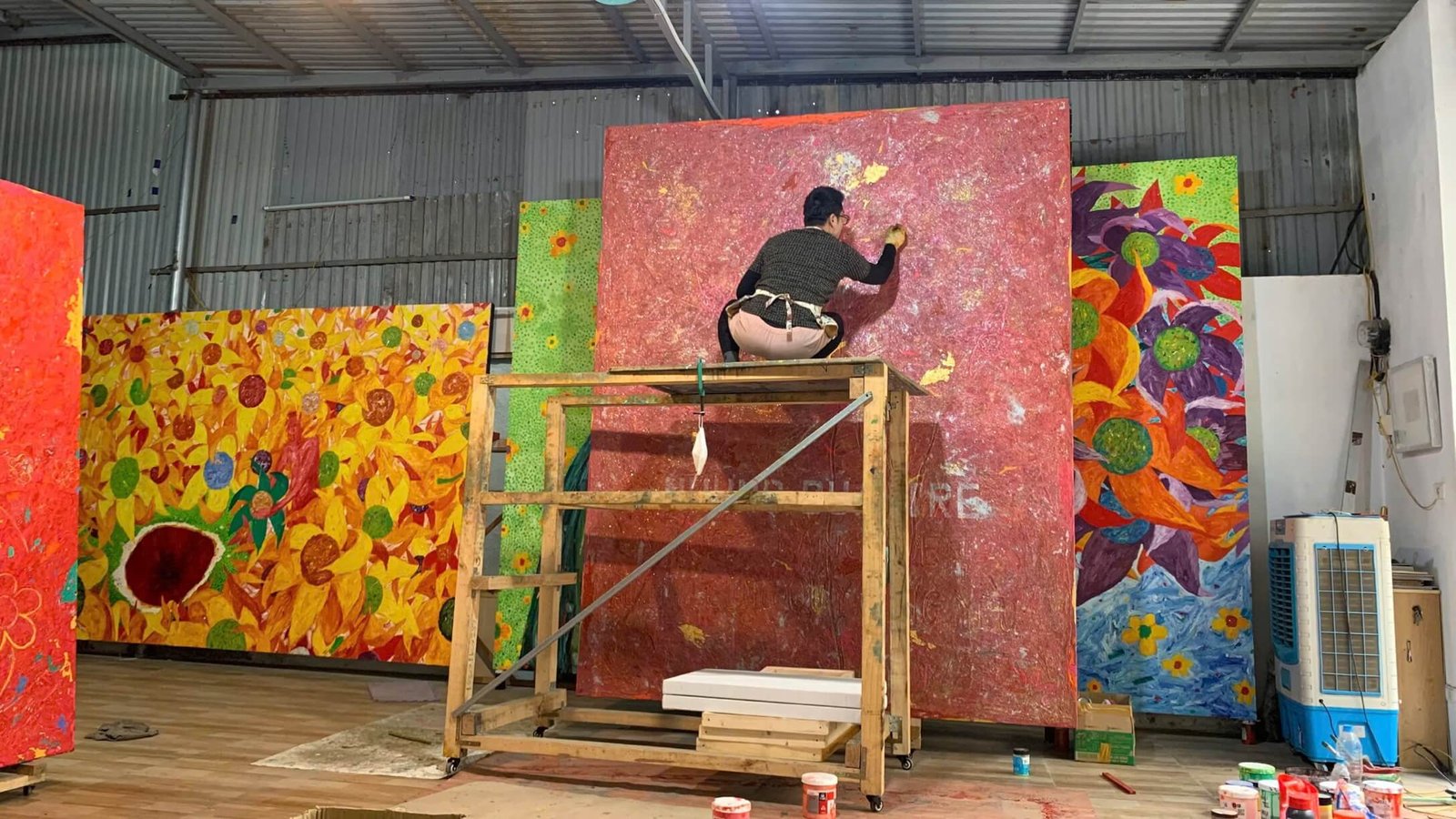Explore the struggles and legacy of Vietnamese artists through an intimate conversation with artist Mai Đại Lưu. Discover insights on the Vietnamese art scene, the challenges of art collection, and the future of contemporary art in Vietnam.
___________________________________________________________________________________________________________________________________________
Driving nine kilometers to Phú Thượng, Tây Hồ, Hà Nội, I turned right into a small valley, searching for the house address sent to me in a message. Just as I was about to double-check my directions, I heard someone call my name.
“Ling!”
I halted my scooter and looked up. “Hi, artist Lưu! How are you?”
“Let me help you with that,” Mai Đại Lưu said, taking hold of my scooter and parking it in front of two storage houses. Gesturing toward the building, he offered a brief tour. “The first floor is my painting warehouse, and I live upstairs. Would you like some coffee?”
“Yes, please.”

We settled in the garden, enjoying the crisp March air. As we sipped our coffee, I expressed my concern.
“Over the years, as I’ve immersed myself in this field, I’ve come to see how little support Vietnamese artists receive compared to those in other countries. The lack of structure and foundational backing has left us vulnerable, allowing external forces to exploit our work. The Vietnamese art industry itself is ill-defined, riddled with gaps and weaknesses.”
“Another concern is that many Vietnamese art galleries have become overly commercial. They may have started with noble artistic visions, but, much like the artists themselves, they have lost their way. I see artists struggling to sustain their livelihoods, sacrificing their artistic integrity for financial survival rather than preserving their artistic legacy for future generations. The majority remain unnoticed. Part of my mission is to humanize these artists—individuals whom society often misunderstands, ignores, or deems unimportant.”

Mai Đại Lưu leaned back thoughtfully. His weathered hands, speckled with dried paint, rested on the wooden table. “That’s something I’ve been reflecting on as well. I’ve been in this profession for nearly twenty years, and I’ve seen firsthand how little the public understands what it truly means to be an artist. People think it’s just about knowing what colors go well together or how to compose a scene, but it’s much more than that. If an artist is constrained by their materials or workspace, then they are not truly an artist. An artist is not bound by physical limitations—he must know how to make those constraints work in his favor, using them to convey his vision. An artist knows his craft like a parent knows their child.”
“From your analogy, obviously an artwork is like a breathing being. Why do you think Vietnamese contemporary art has been dehumanized?” I asked.
He adjusted his glasses before continuing. “I believe it’s the result of a larger societal, cultural, and political issue. Art in Vietnam is created by people, and therefore, human problems inevitably affect art. Art is about relationships, and when human relationships become corrupt, art follows suit. We live in a materialistic society where a painting’s worth is judged by its price tag. If it sells for a low price, it’s considered worthless. Isn’t this similar to how people are often treated—discarded, used, or sold based on their perceived value?”

He sighed before adding, “It saddens me that many believe they can only invest in art once they are wealthy. But art collection is for everyone. Even if you can’t afford to buy a painting, nothing is stopping you from visiting an art exhibition in Vietnam and truly immersing yourself in the experience.”
Artist Mai Đại Lưu continued, “Vietnamese artists are poorly supported and have not been respected as individuals by Vietnamese society. Rather, we are seen as products of Western artistic influences and movements, as if their artistic revolution happened first and we simply followed suit. However, if studied properly, I believe that our Vietnamese art history grew in parallel with theirs. Our biggest weakness is the lack of a fundamental system to record and preserve what we have created. And this can’t be accomplished through meaningless exhibitions alone.”
“What do you think can be done to improve the status quo?” I asked.
“It’s a problem that could take generations to fix. It needs to start in schools and at home, where we educate our children—to truly teach them the fundamental meaning of art. Vietnamese artists themselves need to enrich their culture and knowledge as well, rather than merely treating this as a job to earn a living. Artists are responsible for what they put on canvas. What they read, see, hear, and believe in is important.”
“How would you respond to artists who can’t explain what they created?” I asked.
Artist Mai Đại Lưu answered with a resolute tone, his eyes flickering with intensity. “I would call them irresponsible. If an artist doesn’t know what he creates, how can he convince others that his paintings have meaning? Wouldn’t it be absurd if a writer said he doesn’t know what he’s writing? That’s why you can’t judge an artist merely based on technique—it is only a vehicle to deliver an idea.”
“So what would be your advice for international art collectorslooking to build a successful collection? Is there a special kind of art created solely for collectors?” I asked.
“Well, first and foremost, I’m an artist, and I make art—nothing more. I don’t differentiate between art for investment and art for decoration. Customers decide the function of a piece. However, if one calls themselves an art collector, they must be seeking something beyond mere beauty.”

He paused for a moment “My advice is to truly know and follow artists. There should be something about an artist that intrigues you. Because you’re not just collecting their work—you’re collecting their ideas and life stories. As a collector, your role is to preserve and retell that story for the next generation. So rather than focusing solely on one specific artwork, focus on the artist. The value of a painting is inseparable from the artist’s brand and reputation.”
The golden hues of dusk painted the sky, mirroring the passion in Mai Đại Lưu’s words. The struggles of Vietnamese artists were not just about making a living—they were about being seen, understood, and remembered.
As I prepared to leave, I couldn’t shake the question that lingered between us: If Vietnamese fine art is a reflection of its time and people, then what does the state of Vietnam’s art scene say about us? Perhaps the real challenge is not just in creating art, but in building a culture that truly values and nurtures it.

